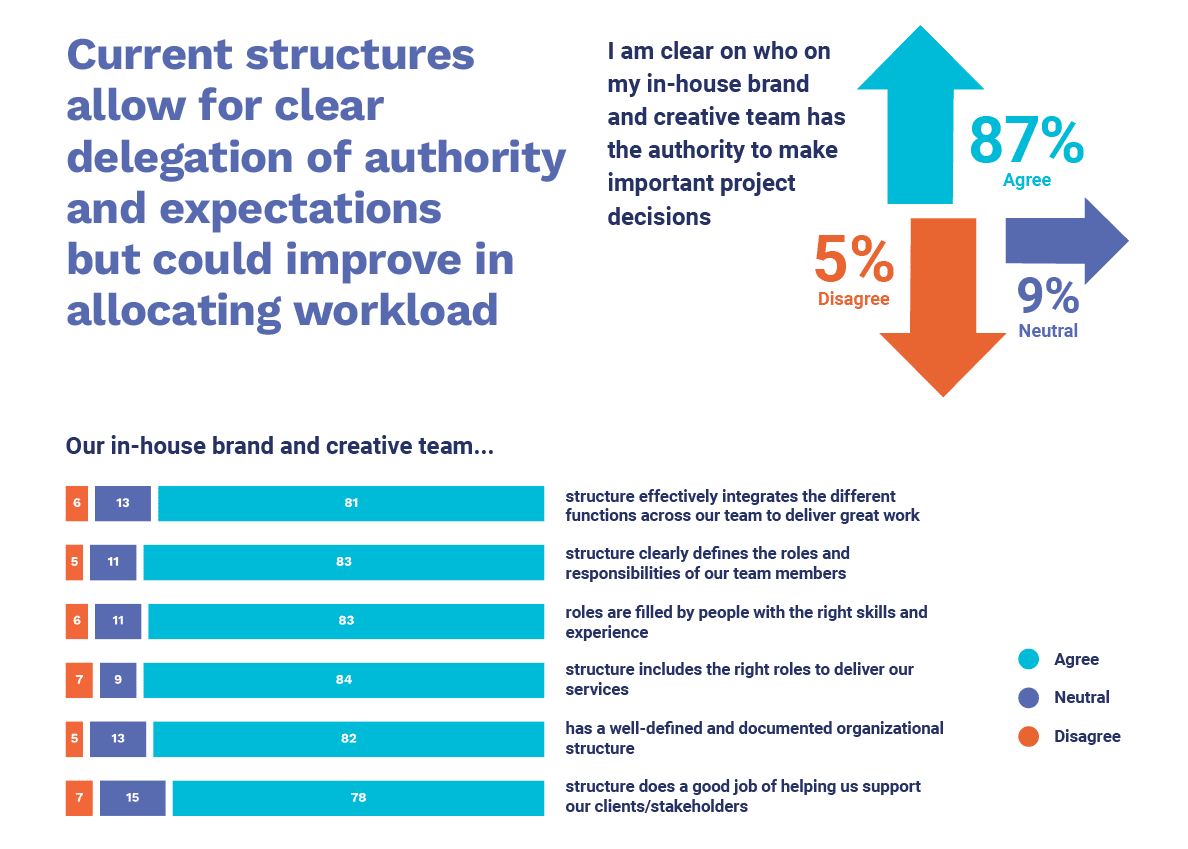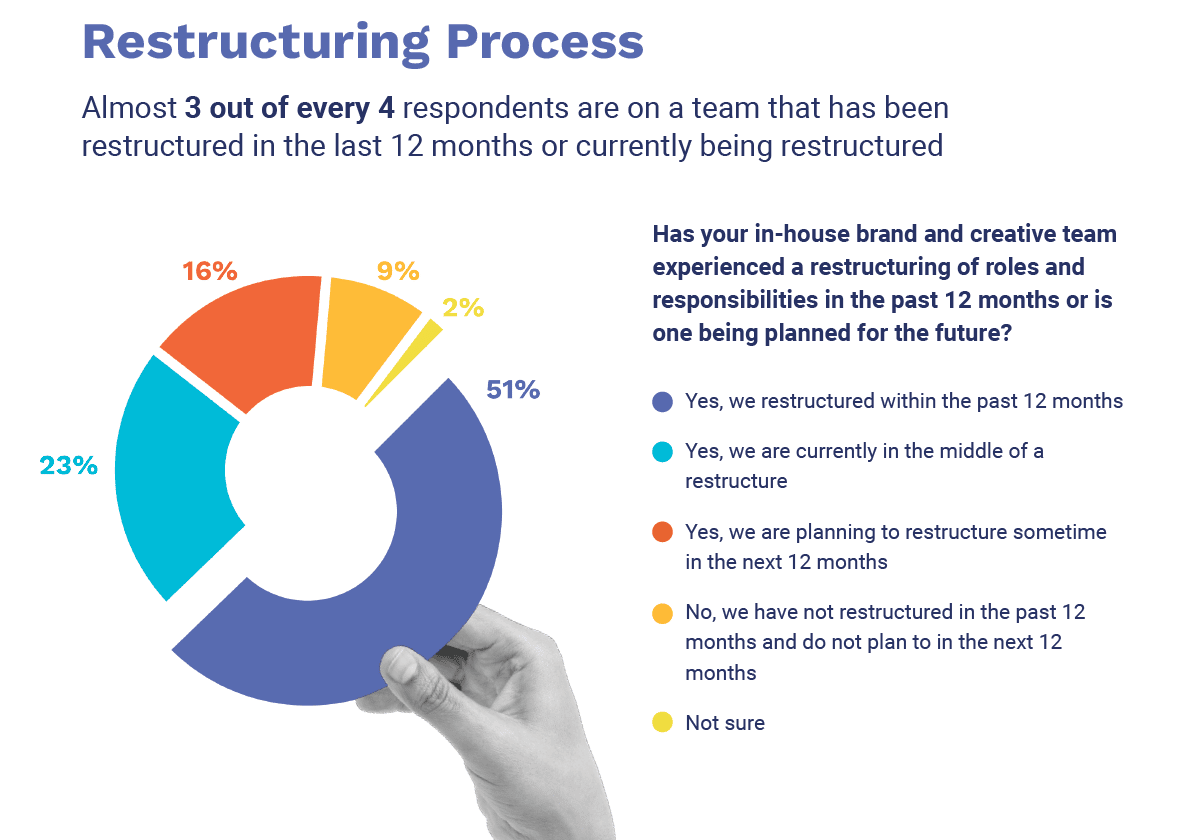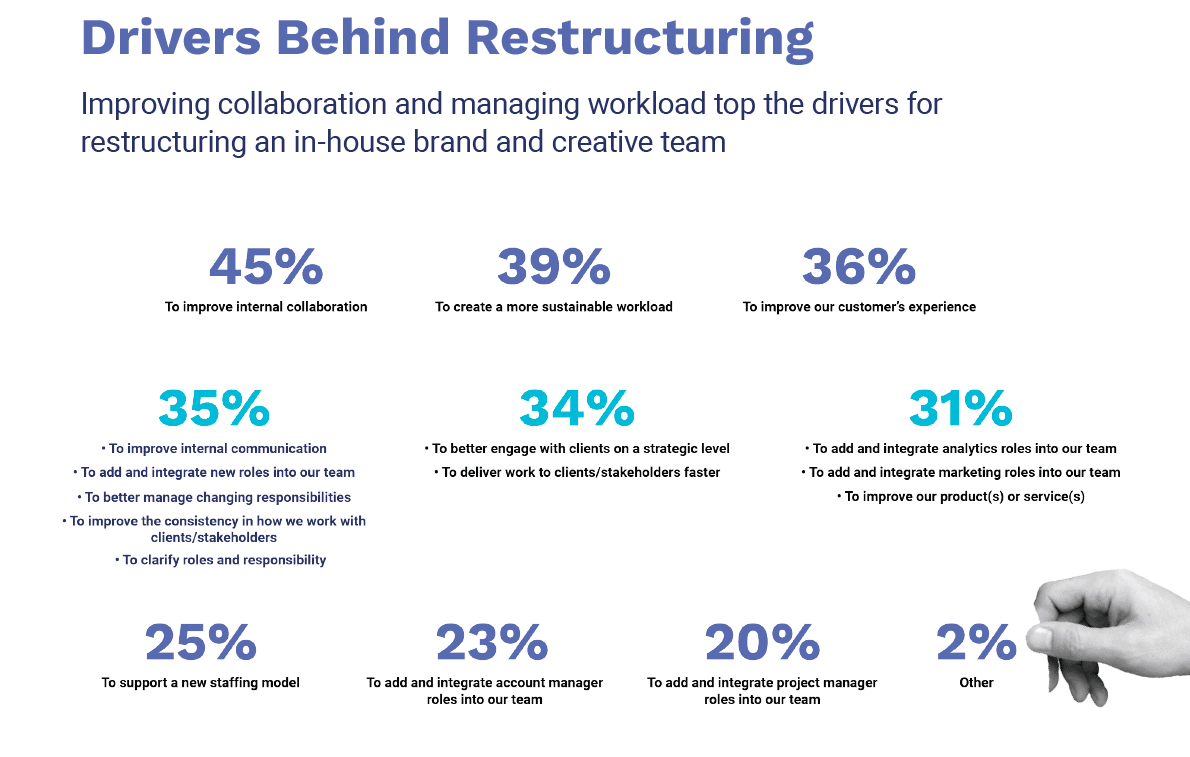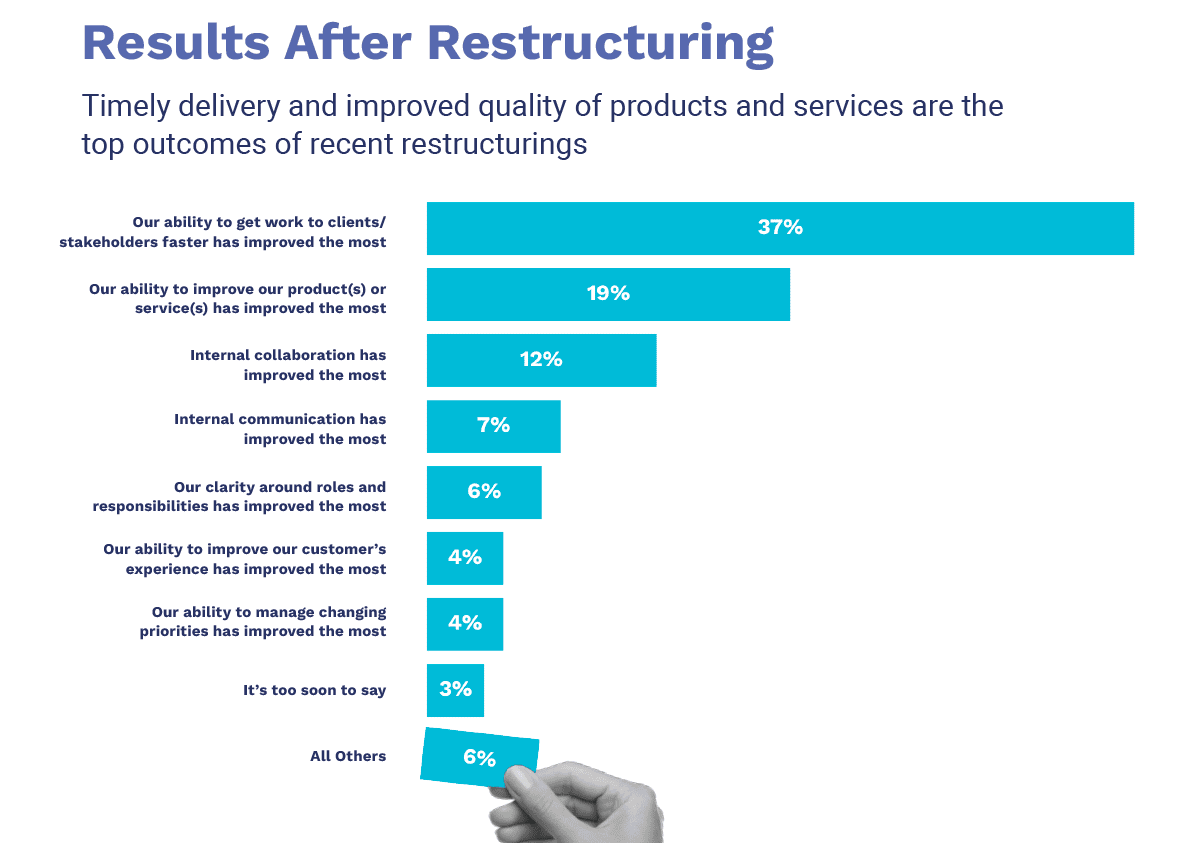As the comms field continues to embrace the stakeholder, employee and customer experience as a top priority, in-house creative and brand teams are restructuring to engage this strategic shift as marketing leaders move towards evolving in-house creative teams into strategic in-house agencies.
New research from creative operations platform Lytho finds that three in four (74 percent) in-house teams have restructured in the last 12 months, or are currently being restructured, while another 16 percent say their organization is planning to reorganize sometime over the next year.
According to the firm’s latest survey, which polls creatives and marketers for its quarterly Creative Operations Report, when asked “Why?” their team has restructured or is restructuring, the top reasons centered on the experience of their stakeholders. These included “better internal collaboration” (45 percent), ensuring a “sustainable workload” (39 percent) and “improving customer experience” (36 percent).
The new report, Why In-House Brand and Creative Teams are Restructuring, contains interviews that illustrate how some organizations restructured creative teams. For example, headcount pressure during the pandemic forced one creative team to modify its processes and approach to technology. In many ways, it shifted, out of necessity, from a highly structured and siloed project management style model to a more collaborative and centralized work environment that’s become a hallmark of in-house agencies.
As the pandemic wound down and the creative team staffed up again, the company envisioned going back to its old operating model. However, the leadership team saw an opportunity to have the marketing leads function more like account managers in an agency. They found centralizing work, particularly at project intake, enabled the team to work more efficiently—and ensured better brand and message consistency across channels and tactics.
“Creative and marketing leaders have been on a journey to transform their creative and brand teams into high-performing in-house agencies that make a strategic contribution to the business,” said Lytho CMO Russ Somers, in a news release. “We believe this research outlines a blueprint for creative leaders: have a clear vision for restructuring, focus on improving the experience of employees and customers, and finally, use data and technology to guide decision-making and support process improvement.”
Some of the additional findings and detail from the report include the following:
Technology influenced restructuring
Most respondents (91 percent) indicated their in-house creative team uses project management or creative workflow software. More importantly, 8 in 10 respondents (81 percent) said data from these systems influenced the organizational design of the proposed restructuring.
Data-driven restructuring decisions
Among the data points that creative and marketing leaders used to sketch restructuring plans were the number of creative project requests their team received (78 percent), the type of projects their teams were currently working on (67 percent), the hours associated with creating projects or deliverables (65 percent), and the utilization or availability of team members (47 percent).
Mid-sized creative teams are more involved in strategy
About one-third of respondents (34 percent) also identified engaging clients “on a strategic level” as among the drivers for restructuring. However, when breaking answers out by team size, the findings showed that mid-sized teams (6-20 members) spend more time—between 19 and 24 percent—involved in strategic services than their peers on large teams (21+ members) or small teams (1-5 members).
Restructuring brings clarity to roles and processes
Eighty-seven percent of respondents indicated restructuring clarified “who on the in-house brand and creative team has the authority to make important project decisions.” Similarly, 81 percent said the “structure effectively integrates the different functions across our team to deliver great work.”
Benefits of creative team restructuring
Thirty-seven percent of respondents said restructuring improved their team’s ability to deliver creative projects to clients or stakeholders faster as the top benefit of restructuring. This was followed by their team’s ability to improve their products or services (19 percent) and improved collaboration (12 percent).












